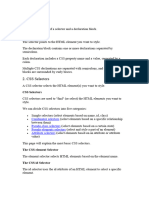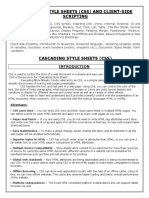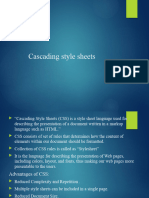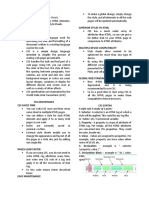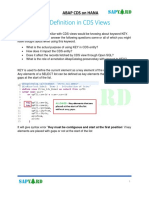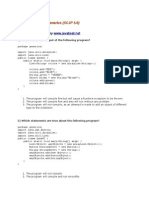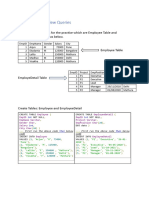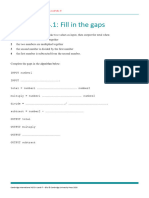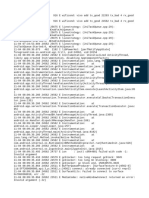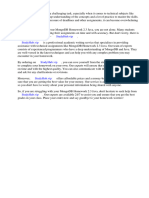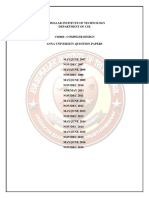0% found this document useful (0 votes)
13 views6 pagesBasic CSS Review
This document provides a comprehensive overview of CSS, covering its basic concepts, syntax, and various types of CSS rules and properties. It explains the differences between inline, internal, and external CSS, as well as the significance of combinators, element types, and specificity in styling. Additionally, it discusses margin, padding, and the cascade algorithm, highlighting the importance of CSS inheritance and best practices for maintainability.
Uploaded by
gxdlyferCopyright
© © All Rights Reserved
We take content rights seriously. If you suspect this is your content, claim it here.
Available Formats
Download as DOCX, PDF, TXT or read online on Scribd
0% found this document useful (0 votes)
13 views6 pagesBasic CSS Review
This document provides a comprehensive overview of CSS, covering its basic concepts, syntax, and various types of CSS rules and properties. It explains the differences between inline, internal, and external CSS, as well as the significance of combinators, element types, and specificity in styling. Additionally, it discusses margin, padding, and the cascade algorithm, highlighting the importance of CSS inheritance and best practices for maintainability.
Uploaded by
gxdlyferCopyright
© © All Rights Reserved
We take content rights seriously. If you suspect this is your content, claim it here.
Available Formats
Download as DOCX, PDF, TXT or read online on Scribd
/ 6








